New Aesthetic for a new West, a new Civilization and the Plagiarism of Classicism
“If you’re going to try, go all the way. Otherwise, don’t even start. This could mean losing girlfriends, wives, relatives and your mind… and, you’ll do it, despite projection and the worst odds… you will be alone with the gods, and the nights will flame with fire. You will ride life straight to perfect laughter.” – Charles Bukowski
The Stranded Life Within You
What, if some day or night a demon were to steal after you into your loneliest loneliness and say to you: ‘This life, as you now live it and have lived it, you will have to live once more and innumerable times more; and there will be nothing new in it, but every pain and every joy and every thought and sigh and everything unspeakably small or great in your life will have to return to you, all in the same succession and sequence—even this spider and this moonlight between the trees, and even this moment and I myself. The eternal hourglass of existence is turned upside down again and again—and you with it, speck of dust!
Die Frolich Wissenschaft – Nietzsche
The Eternal Recurrence of Nietzsche leaves us with only one choice. Every act, choice, every response, no matter how small, we must live over and over again into infinity. Imagine all the unlived life trapped within you. Imagine all the great work of your soul stranded and orphaned, unlived for eternity.
This is the torture of Prometheus chained to the rock, his unlived life stolen from him as he grows old into the eons. This calls us in our Promethean Age to a kind of radical confidence, radical outpouring, radical originality. It strips from us the supine, sacerdotal rehashing of classicism and other kinds of regression. The sky empty of gods fills us with a kind of torrential freedom in which we come face to face with our own duty to create and impress great meaning and beauty onto the firmament.
Heidegger describes in “The Question Concerning Technology” (Die Frage nach der Technik), that technology, like artistry, emanates from a primordial poetic vision of the world, an inborn desire for disclosing the Meta-truth of things. That technology, in its primordial sense, is not merely a tool or means to an end but is tied to a revealing of the world. This “bringing-forth” or poeisis is akin to artistic creation, which is fundamentally poetic. The ancients described the capacity for the creation of a Bach guitar suite and a nuclear engine to emanate from the same faculty. This poiesis is the thing ripped from Prometheus, and the stranded life which remains inside us in Nietzche’s Groundhog Day scenario. Derivative, regressive and rehashing of bygone artistic forms serve only to further occlude and conceal this raw, forward-seeing creative confidence which we absolutely must call forth in the hearts of our people if the West is to survive. Calling this forth is the highest priority of our cultural moment.

The aesthetic and technological disclosure, Welterschließung, this bringing forth, is not merely instrumental; it is a mode through which a particular vision of reality is disclosed and articulated to our people in our own moment. It is grounded in an ontologically-prior -not historically prior – poetic and metaphysical understanding of the world but permeates hearts and is immediately known.
A New Epoch, a New Aesthetic
We will never know how much stranded life we have left on the table. But we do know that merely edifying and mirroring historical aesthetics can foreclose on poiesis just as gravely as a celebration of dehumanizing brutalism. They both obscure Promethean poetic originality by reducing artistry and architecture, and indeed the whole of the world, to a “standing-reserve,” a Bestand, a resource to be farmed and exploited. In effect, they both leave our greatest stones unturned. They serve one purpose: to lock our soul’s destiny down on the rock, never to be lived for fear it may disrupt.
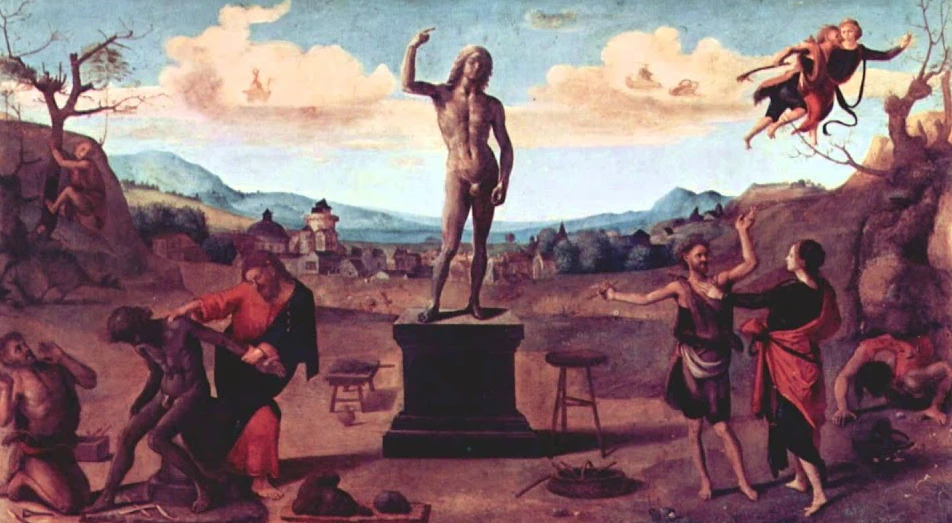
We cannot replace the great bringing-forth of the human spirit through the historical rhyme scheme of Greco-Roman art and/or neoclassical architecture. They are platitudes in concrete. The Randian vision of the architect does not design what is merely commission-worthy – he seeks to bring all who enter into a new Weltanschauung, a new poetic worldview. His charge is among the most profound of all professions. He unlocks the poiesis, the ripe, vivid encounter with the creative power in every visitor, the instinct which seeks meaning-making and elevates our attention to the higher ideal, to the stranded life remaining within us. He is the Vanguard of the soul in brickwork.
Capacity for abstraction is of central, prime value to civilization. It is on the basis of inspiring, enchanting meta-meaning that people can create community and cooperate to build civilization. The perversion or outright excising and demolition of abstract meaning is a tool of unrestricted warfare against civilization. Materialistic brutalism is one such brazen, well-understood tool of war. Classicism, however, is as well as it still lacks the meta-meaning of our age and constitutes a materialistic, literal representation of a bygone age instead. It is obsolete in the way which the West always instinctively recognizes. Literal representations of Greco-Roman patrimony are inimical to the meta-meaning upon which to rebuild a civilization. They may represent noble things, but they are both literal, and they are not ours.
Fine art works and great Colossi are symbolic. Symbols are by definition the representations of an abstraction. Mechanical literality is not the basis for great meaning. Civilization has its roots in a-priori aesthetic blueprints. Civilization originates with art and aesthetic symbolism.
In the 1600’s the figure of Columbia was originally a noble savage – a female version of Dionysus with feathers and buckskin and primitive genius. She took on a similar aesthetic spirit as the people of the time looking onto vast virginal forests of America. Columbia was later syncretized with the goddess Liberty because American forests could be privately owned as a token symbol of manumission from the feudal serfdom of Europe. A classical mimicry of Columbia as a public art gimmick is sacrilegious, dishonoring both its original meaning and the unique American drive for newness. A representation of the outward appearance of a thing without cultivating inward truth value. A hypothecation of the past without an expressing anything to the modern heart.
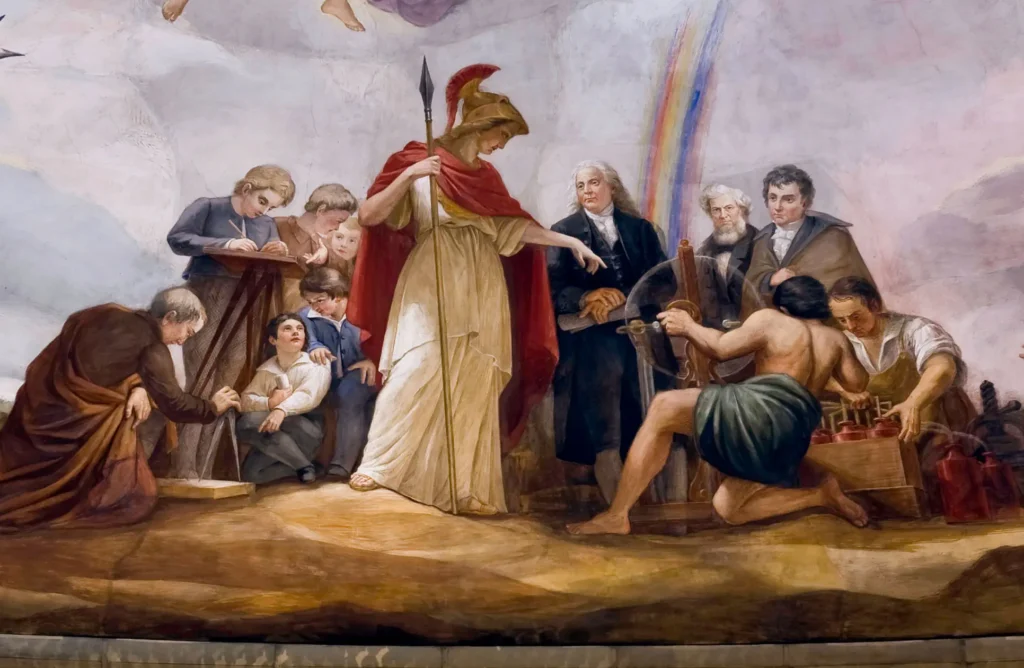

As a contemporary example, Prometheus is also a face of Dionysus but which reflects Man’s native power, excellence, strength and industriousness. He is a similar, but vastly more powerful symbol to Columbia and Liberty and in a masculine, post-industrial, technology-enabled form for a bold, new America. His symbol reflects an American landscape which has been metabolized but where new frontiers of technological, and indeed mythotechnological expansion and liberation are here at our doorstep. Prometheus is not only the archetypal locomotion of the West-qua-West. He is the Titan of Freedom, the Pursuit of Happiness and Manifest Destiny. The most powerful of original core American ideals, the most ripe and essential aspects of what it is to be American and Western. And he reflects the spirit of our age more than any other archetypal figure.
Great artists do not “talk their book.” They do not say, “we ought to make something literal and uninspiring because this is just what we happen to be capable of doing.” Artists worthy of the charge instead seek always to rise to the occasion, become more capable of more meaning and more originality and to outpour even greater quotients of beauty. The work stands alone, absent of self-promotion because the work is meant to touch the archetypal heart residing within all onlookers.
Take Rodin as an example of this from a prior age. There are aspects of his sculpture that aesthetically rhyme with Impressionism. But there are also features which are faint precursors to the Futurism of the 1920’s. They rhyme with historical forms of Classicism, but with an obvious break from dogma and greater creative license for aliveness.
One intuits that these breaks from classicism had something to do with the way industrialization unlocked man into greater individualism, yet still reflected him bound by the archaic materials of the day: steel/iron, coal/steam power, etc. All in all, this expressiveness about his milieu which was not deliberate or contrived was extremely poetic.
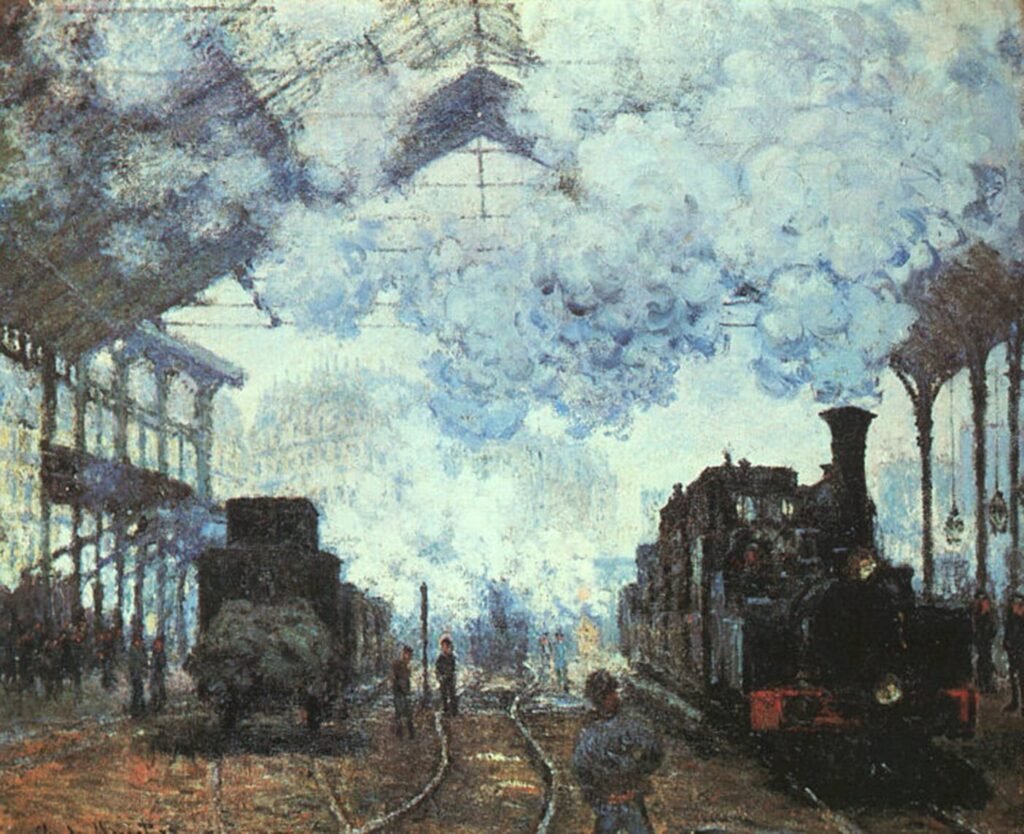
He experienced a period of profound transition that was uniquely his own, straddling the Romantic and the Modern. His work reflects the tension: the yearning for mythic, expressive grandeur colliding with the fragmenting, accelerating inhumanity of the Steel Age.
There were aesthetic rhymes with Impressionism. But in conservative Victorian fashion he still was not given to the excessive abstraction of later sculptors, although his figures often ripple with similar vitality which presaged the Impressionists. The nearly grotesque features of The Burghers of Calais or The Thinker remind one of aspects of Da Vinci’s drawn portraits, of the anatomy of Steel Age man accentuated to illustrate the tension of the era. They echo with how Impressionist painters depicted fleeting sensations rather than static forms. His sculptural pre-Impressionism visually suggests a kind of ephemerality.
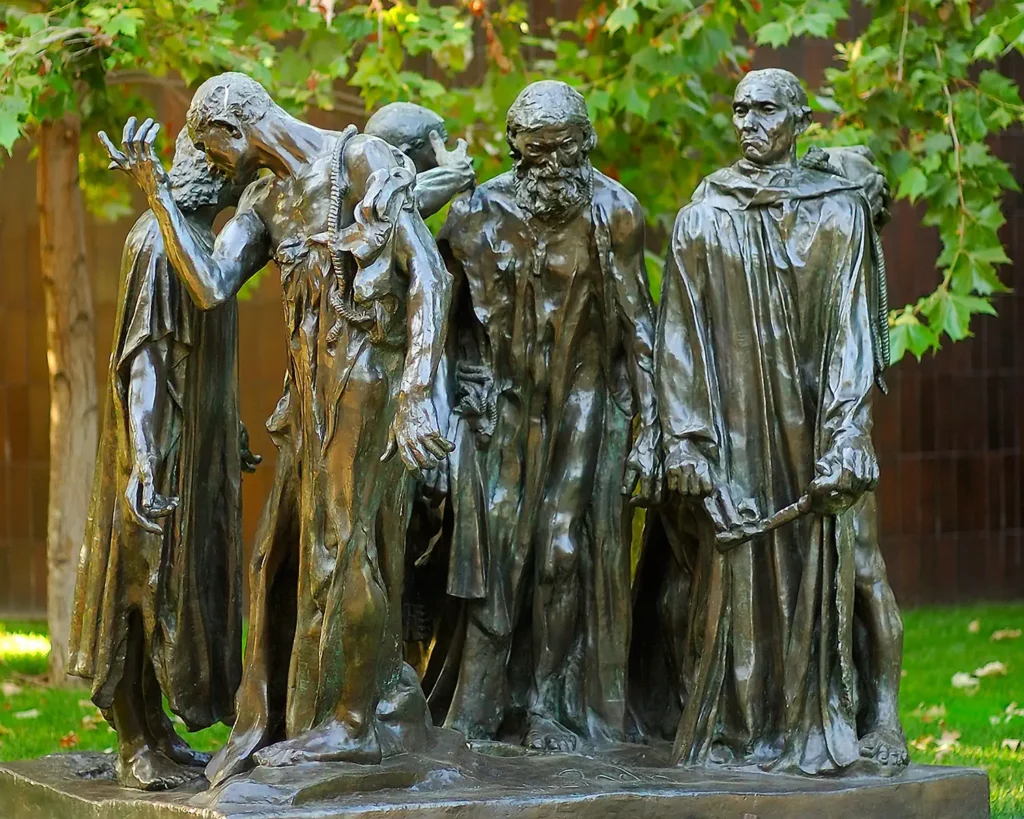
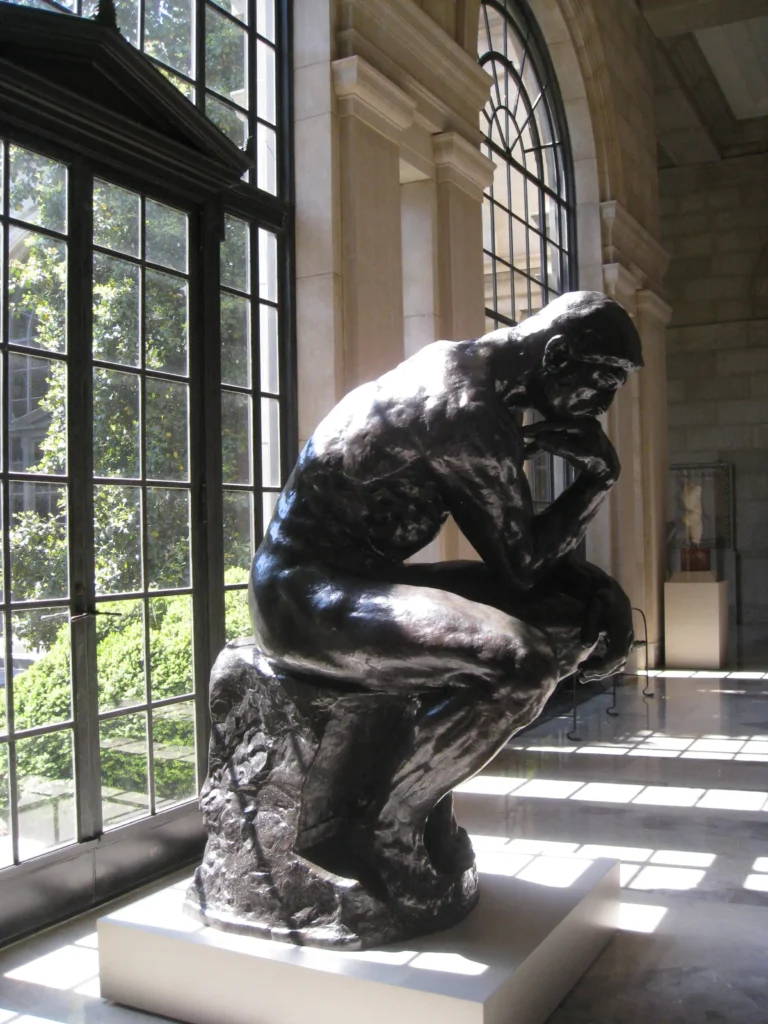
Rodin was also a breaker of classical dogma. Where classical sculpture idealized the body and moralized form, Rodin deconstructed those ideals to reveal a newly-exposed raw aspect of Man: fragmentation and tension within his epoch, nonetheless impelled by the same Manichean struggles and desires. The Walking Man, with its deliberate incompleteness, is as much a statement of industrial alienation as it conveys highly elegant motion. It was as though he anticipated both Futurism’s dynamism and the spiritual unrest of contemporary Existentialism.
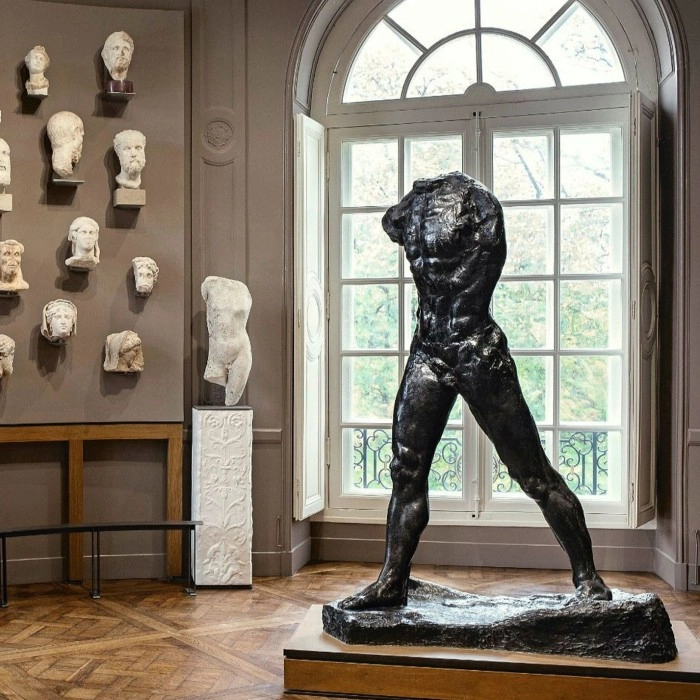
Beyond the “-isms”, his work was like an alchemical forge of metamorphosis, a romantic and modern sensitivity where the classical begins to fracture into the expressive. Truly something emergent from Rodin’s age alone.
Artistry Must Honor
Apart from its own original merits, classicism functions more today as a cultural suppressant. If we thought highly of ourselves, would we fling ourselves down prostrate to the artwork of 2,500 years ago? Or would we create from the depths of our own hearts single switch reflect the spirit of our own age? To claim no one from our age can create great art is the same instinct which seeks the deconstruction of the West. The passive Epimethean laxity evident in classical Greco-Roman rehashing which does not seek the soul of the age is an ally with the static down-winding entropy of Jupiter.
Prometheus, the Titan of artistic outpouring, the Titan of claiming the stranded life within you, is not afraid of controversy. Not afraid of originality even if it means losing sales. The act of Colossus building, however few times it has been achieved in the world, is not the tool of a commercial brand. They don’t hang Thomas Kinkade in the Metropolitan.

For an outsider, without a depth of native-inhabited sense for the long arc of Western mythopoetic genius, one might ascribe a kind of children’s book neoclassicistic version of what is “Western” might mean. But artists, especially the less than a once-in-a-Century Colossus builder, are not bargainers. They are not tourists. They embrace creative destruction with unapologetic strength and integrity.
The ancestor worship bound up in classicism leads to the same reneging on Man’s nature which Prometheus refused to do. Paying homage to the ancestor, repaying the debt for bringing you here, and extending this debt onward back into innumerable generations, grows the debt to an impossibly large magnitude. The innumerable generations are subsumed into one great sky father ancestor. The impossibly large debt means permanent supplication of Man to the sky father. Classicism is a supplicative homage to inheritance, not a vivification of Man’s agency and original, creative triumph. In the West, unlike imperial China, Middle Eastern Islam, or animistic Africa, great emblems of national power and beauty are explicitly for the purpose of the latter.
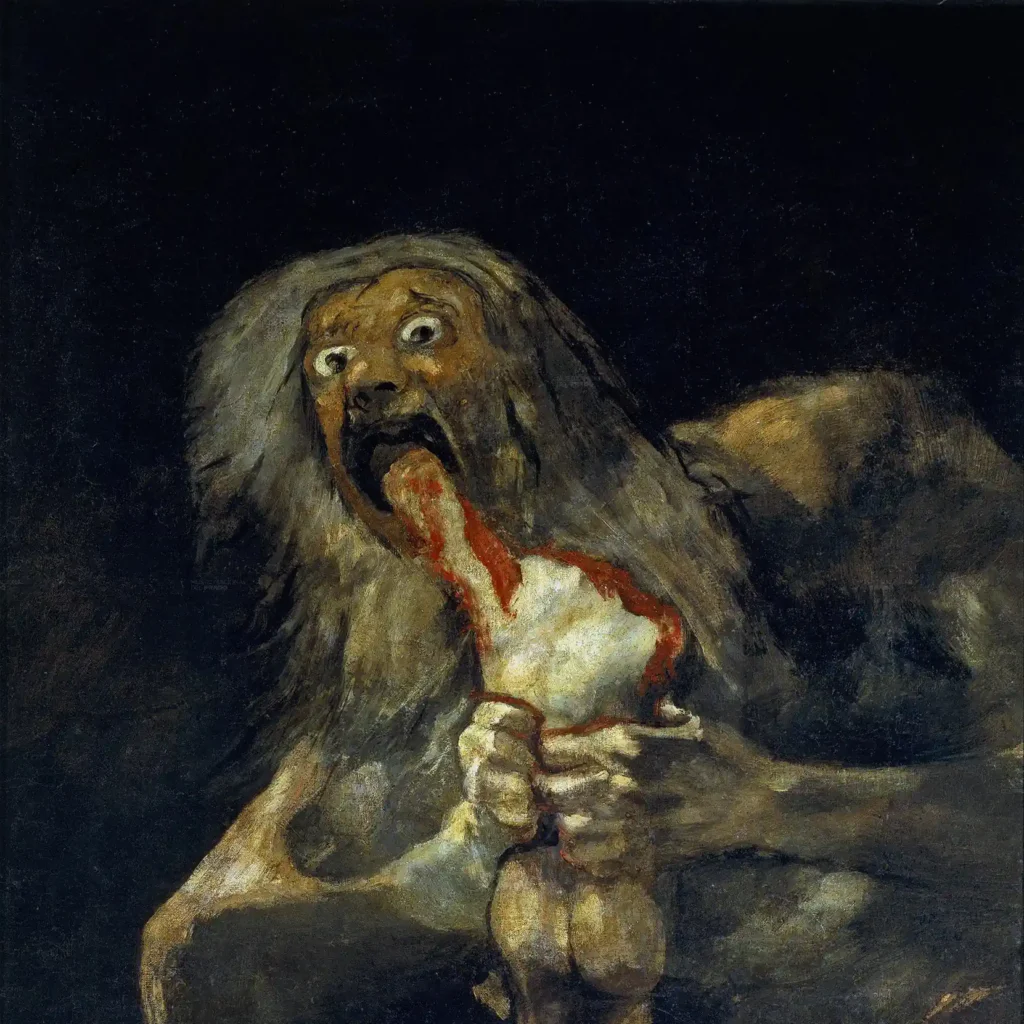
The Western artist exonerates the risk taker as the hero. They conjure their own aesthetic destiny and make it manifest on this plane. They are marked by the most involuntary trait: where in whom no feature is left unladen without elegant meaning in relation to the whole. They are predominated by that terrible, resilient, single-minded egoism which gleams like brass in the evening sun. The stress of their hammer strikes justify all eternity.
They care about inspiring you with the great beauty and subtlety of their works, not hoist a neon sign “Open: Western Civilization Here!” You will not find them in the museum gift shop with figurines from Bulfinch’s Mythology. Unbridled uplifting, vitalizing beauty is felt in their work like a silent, undeniable current from deep in the ocean, reflecting the utterly awake, tremendously vivid reality of Man and his impossible nature here on this far away planet. There is no soporific, forgetful feature lulling onlookers to further anaesthetize. They wrest the flame of Man’s dynamism and metamorphosis and bring it to life here among us.
Man. Also. Rises.
